Reviews
Ruth Ann Baldwin
USA, 1917
Credits
Review by Cullen Gallagher
Posted on 27 July 2009
Source Kino DVD
Categories Women of the West
In the introduction to his essential and illuminating study The Silent Feminists: America’s First Women Directors, film historian Anthony Slide remarks that during the early days of cinema, “not only were women making films, but contemporary observers were making little of the fact. It was taken for granted that women might direct as often and as well as their male counterparts, and there was no reason to belabor this truth.” In the intervening decades, much of the legacy of women directors in the silent era has been lost or forgotten — films no longer exist and filmmakers’ lives and careers are ambiguous at best. How to reverse this process with so little evidence, and so few films? The release of Ruth Ann Baldwin’s 49-17 on DVD, her second feature film as director from 1917 - and the first known Western to be directed by a woman - was certainly a big step forward towards documenting this history and making it available to the public.
Beyond its irrefutable historical significance, 49-17 stands out for its clever reworking of traditional Western mythology at a time when the cinematic genre was still in its infancy. Baldwin got her start in the industry as a screenwriter, and for this film she based the script on a story by William Wallace Cook from Argosy magazine. She uses its self-reflexive story of a man so obsessed with the West that he actually recreates it himself as a means to critique the ways in which history remembers the American West of the 19th century. From the film’s opening moments when the elderly Judge Brand opens his trunk and sees (literally) his days a youth in the Wild West projected inside, Baldwin continually reminds that history is constructed not solely of concrete artifacts, but also individual memory, fantasy, and desire.
Nostalgic for the mining life he once knew and tired of life in the East, Judge Brand sends his male secretary, Tom Reeves (played by Baldwin’s husband, Leo O. Pierson), to go out West and find a population for his old prospecting colony, Nugget Notch. “I want to rebuild it, and enjoy one more taste of the old West before I die,” says Brand. But upon reaching his destination, Reeves discovers that “Western types were rare birds - and shy.” So, he engages a failing theatrical troupe specializing in Old West-style shows to populate the town without letting Judge Brand on to the fact that it’s all a charade.
Fiction, however, turns into reality when Reeves and Jim Raynor clash over the love of a girl, whom Judge Brand believes is the missing daughter of his former mining partner, who is overdue to collect her father’s large fortune. However, Raynor’s villainous trickery - robberies and kidnappings - also gives Judge Brand a chance to be the hero once again, and Reeves his first shot at real Western excitement.
Whether it’s Raynor’s Lucifer-esque, pointy facial hair, or Brand’s penchant for shooting bullets into ceilings and large crowd to express his excitement, Baldwin takes the hallmarks of the traditional oater and puts a comical spin on them. Yet it’s important to note that she never derisively mocks the conventions or the characters — they are exaggerated, but in a manner at once sympathetic and reverent. Its thesis that our vision of the Old West derives as much (if not more so) from the way we want to remember it than the way it actually was foreshadows such films as 1917’s Wild and Woolly with Douglas Fairbanks (and scripted by Hollywood maven screenwriter and memoirist Anita Loos) and 1925’s Womanhandled starring Richard Dix, both of which focus on Easterners who heed the obsolete call of Manifest Destiny only to discover the “true west,” or what they thought of as such, no longer exists. And perhaps it never did. It would be a misnomer to call these “revisionist Westerns,” as they were created right alongside (and in some cases before) such foundational cinematic Westerns as The Iron Horse, The Covered Wagon, and Tumbleweeds (to name only a few of the multitudinous examples of the genre that proliferated during the silent era). Instead, what these films suggest — and 49-17 in particular — is that the Western, far from stringent, has always been interested in experimentation and exploration. Much like the iconic characters that populate its stories, the Western genre itself is an exploratory process, and we can certainly count Ruth Ann Baldwin as one the many who carved out the genre in its earliest form.
As for Baldwin, little is known about her career or life after 49-17. In his brief entry on her in The Silent Feminists, Slide makes note of two different reviews, one from Motion Picture News (“The results are satisfactory though it must be confessed the introduction offered such a rosy prospect that they fail to come up to expectations in every department,”) and Motography (“The direction should be well complimented as to the thrilling climax… and the Western atmosphere has been ably maintained throughout, adding a tinge of realism to the realize in its entirety,”). As far as we know, 49-17 was her last film as director. Returning to screenwriting, there are no records of her working after 1921. Concluding his entry, Slide writes, “When Leo O. Pierson died in 1943, Ruth Ann Baldwin was not his wife. The couple had either divorced or she had predeceased him.” Both Baldwin and her film are proof that film history is far from set in stone, and there is much more to be uncovered both about the history of the Western, and the role that women have played in its development.
More Women of the West
-
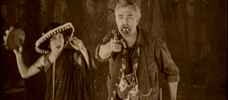
49-17
1917 -
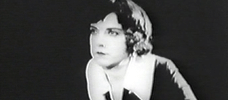
The Gun Woman
1918 -
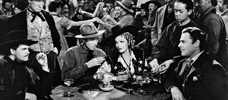
Destry Rides Again
1939 -
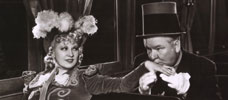
My Little Chickadee
1940 -
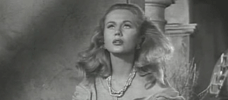
Colorado Territory
1949 -
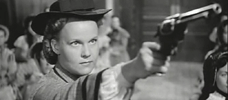
Westward the Women
1951 -
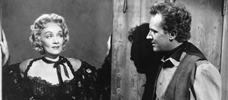
Rancho Notorious
1952 -
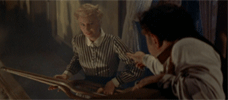
The Violent Men
1955 -
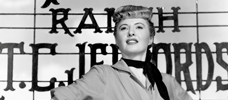
The Furies
1950 -

The Last Sunset
1961 -
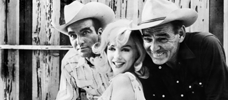
The Misfits
1961 -
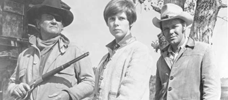
True Grit
1969 -
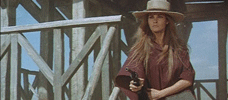
Hannie Caulder
1971 -
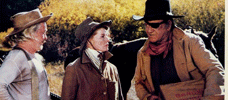
Rooster Cogburn
1975 -
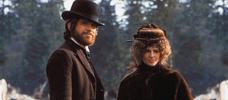
McCabe & Mrs. Miller
1971 -
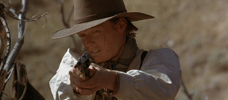
The Ballad of Little Jo
1993 -

The Quick and the Dead
1995 -

Viva Maria!
1965 -
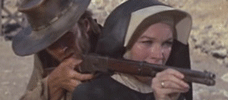
Two Mules for Sister Sara
1970
We don’t do comments anymore, but you may contact us here or find us on Twitter or Facebook.



